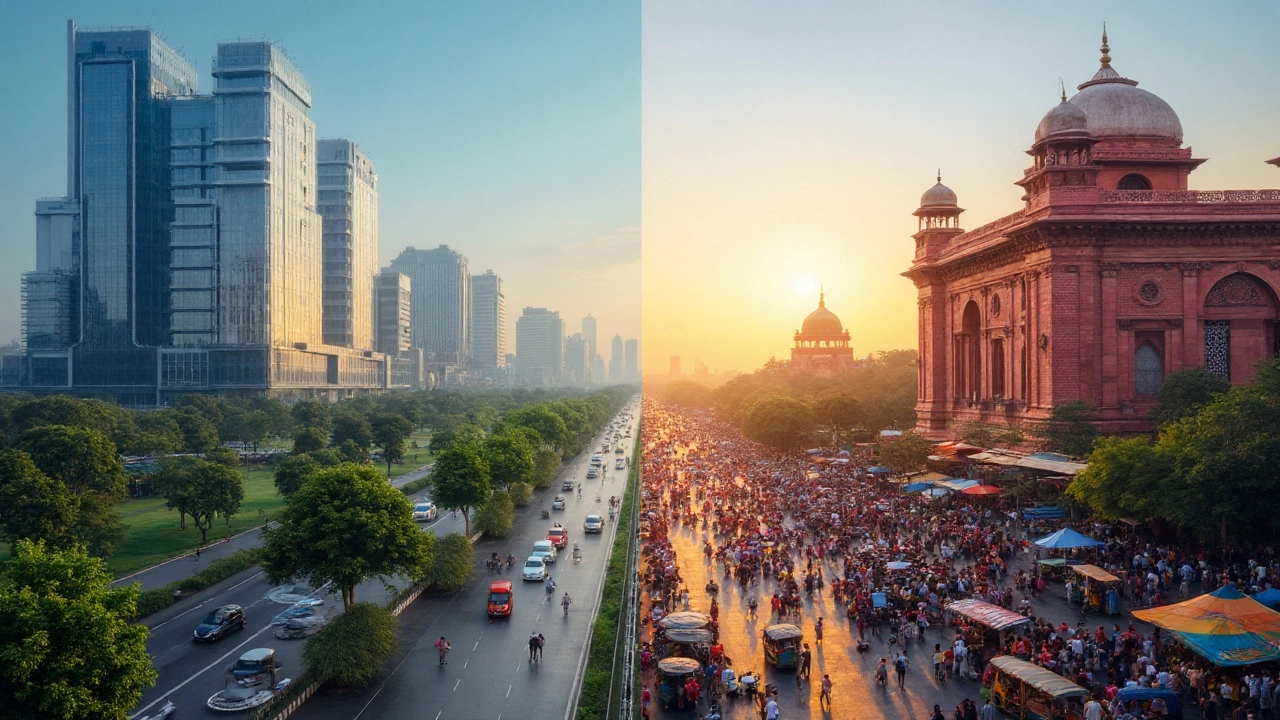
Explore a data‑backed look at whether South India is richer than North India, comparing GDP, per‑capita income, HDI, FDI, literacy and more.
When talking about regional wealth India, the uneven distribution of economic resources across Indian states and territories, we’re really looking at how money, jobs and services spread over a massive, diverse country. Also known as subnational economic balance, it shapes everything from travel decisions to where businesses set up shop.
One key piece of the puzzle is state GDP, the total economic output of each state measured in rupees. States like Maharashtra, Tamil Nadu and Gujarat top the list, pulling in billions that fund infrastructure, education and health. In contrast, smaller economies such as Bihar or Jharkhand generate far less, which directly impacts public services and job opportunities. Understanding these figures helps you see why a traveler might find world‑class hotels in Mumbai but simpler accommodations in Patna.
Another crucial metric is per capita income, the average earnings of individuals in a state after dividing total GDP by its population. While a high overall GDP sounds impressive, a densely populated state can still have a low per capita income, meaning many residents earn less than the national average. This distinction explains why economic disparity persists even in wealthy regions and why policy makers focus on per‑capita figures to target poverty alleviation.
Economic disparity, the gap between rich and poor states, drives migration, investment patterns and even cultural exchange. For example, strong job markets in Delhi or Bengaluru attract workers from less affluent areas, shifting demographics and creating new demand for housing, transport and entertainment. At the same time, investors eye states with growing per‑capita income as opportunities for new ventures, while NGOs prioritize regions with high poverty rates for development projects.
Whether you’re planning a road trip across India or scouting a location for a startup, knowing where wealth concentrates lets you make smarter choices. A traveler can match budget expectations with local cost of living – a city with high regional wealth often means pricier meals and hotels, but also better safety and services. An investor can gauge market size, consumer purchasing power and local government incentives by examining state GDP and per‑capita income data. Moreover, understanding poverty rates helps NGOs and policy makers allocate resources where they’re needed most, closing the gap that economic disparity creates.
In short, regional wealth in India isn’t just a statistic; it’s a live map that influences daily life, business decisions and travel experiences. Below you’ll find a hand‑picked collection of articles that break down these concepts further – from deep dives into state‑specific GDP rankings to practical guides on navigating economic differences when you’re on the ground. Dive in to get the data, stories and tips you need to turn numbers into real‑world advantage.

Explore a data‑backed look at whether South India is richer than North India, comparing GDP, per‑capita income, HDI, FDI, literacy and more.